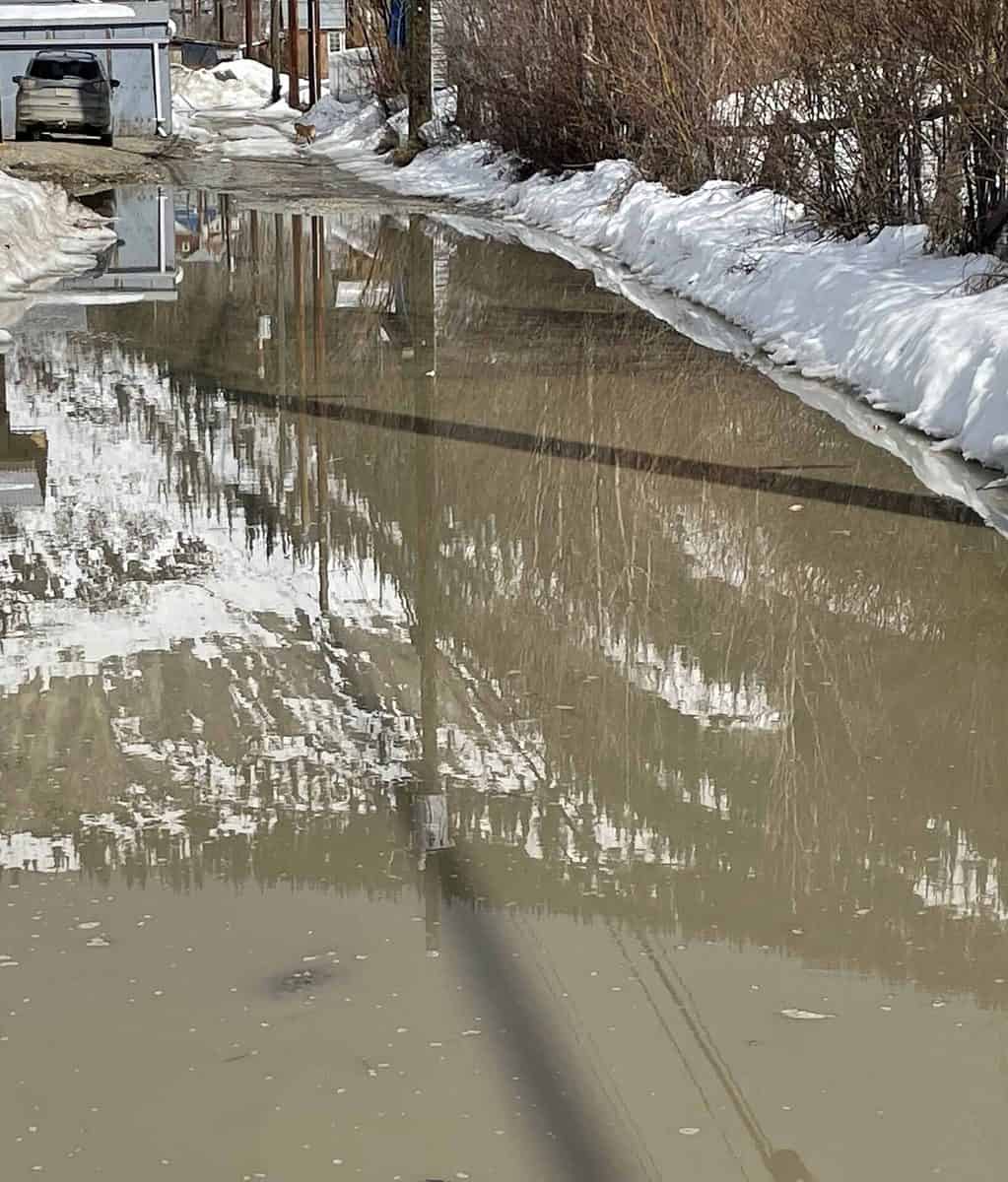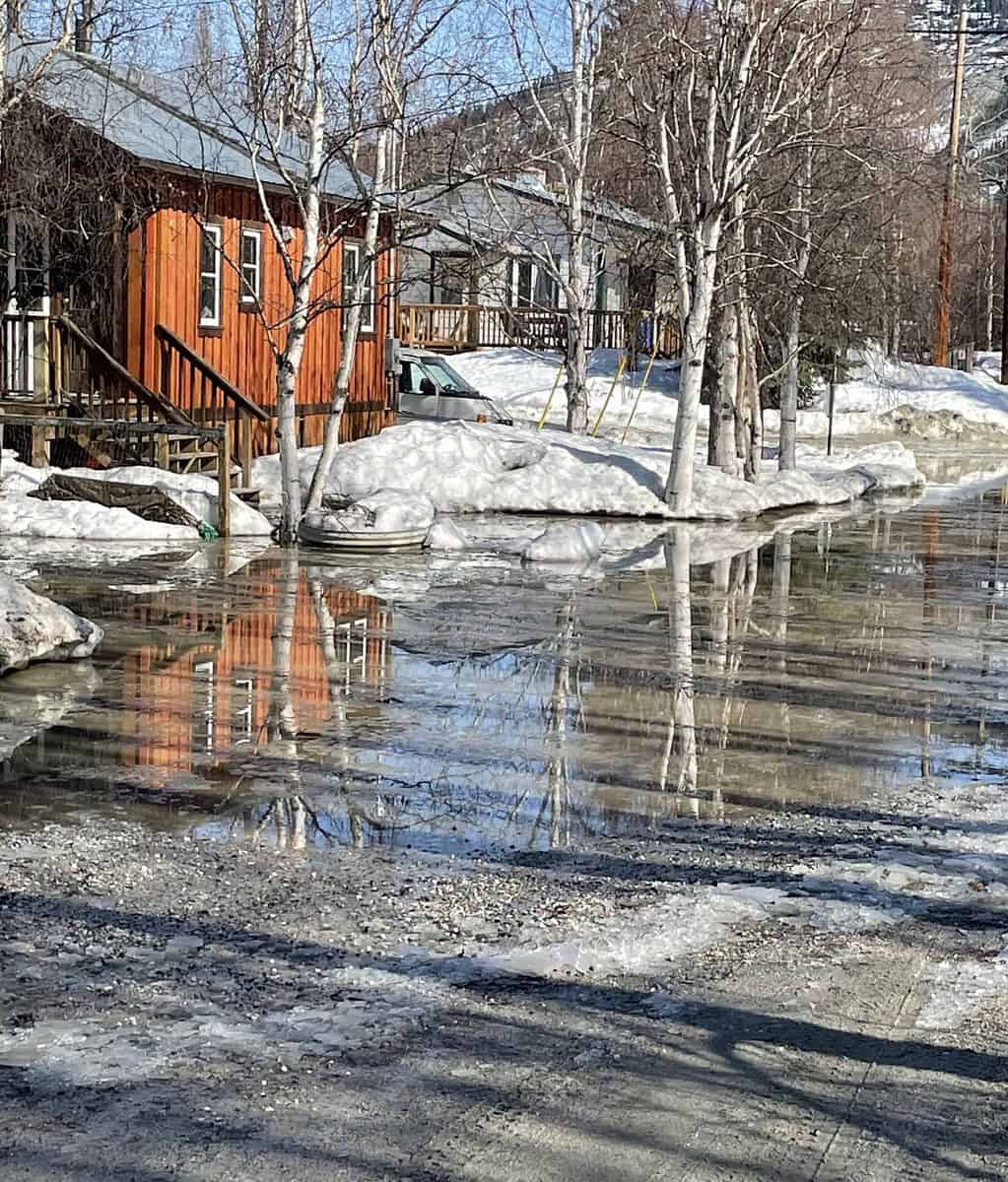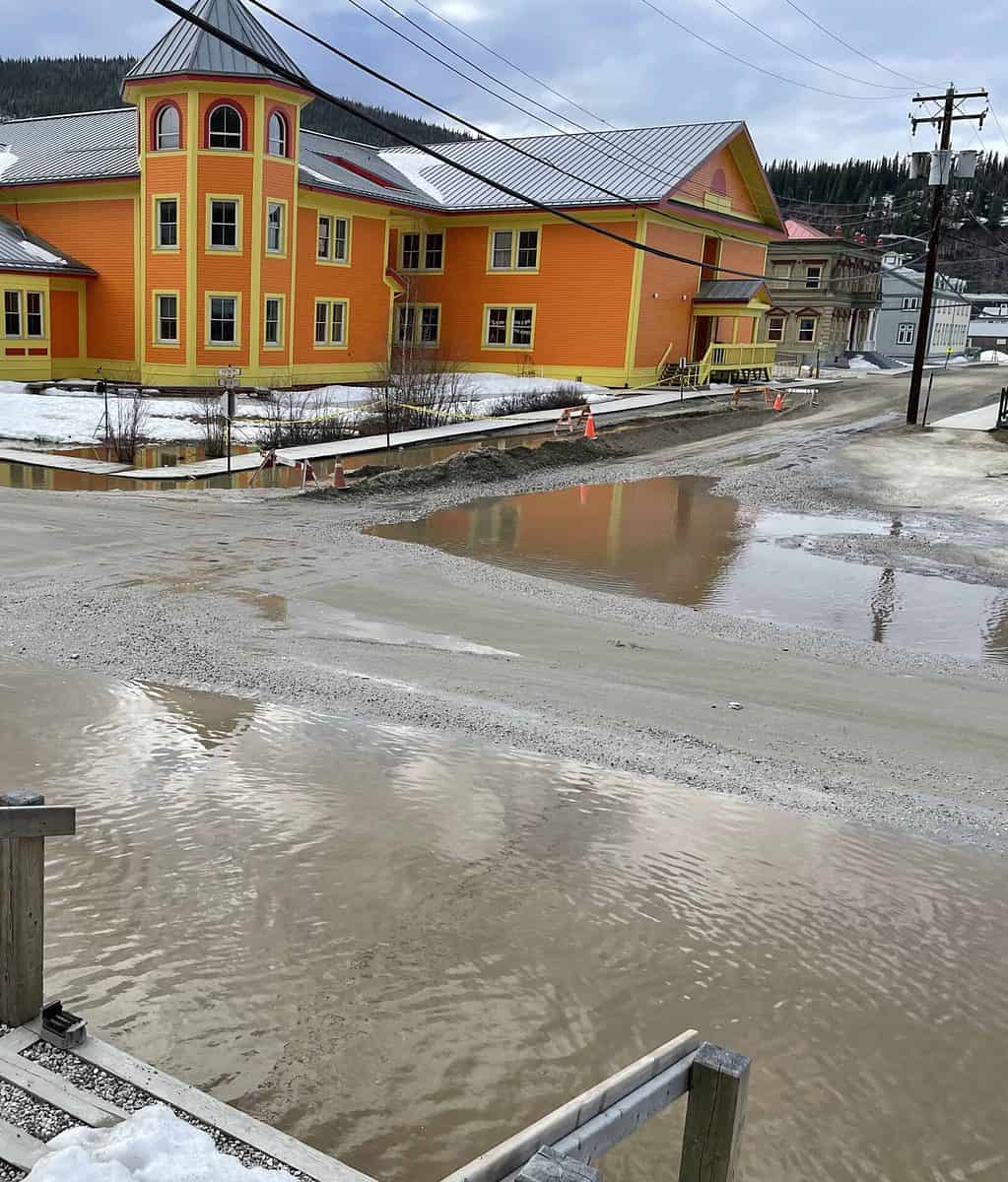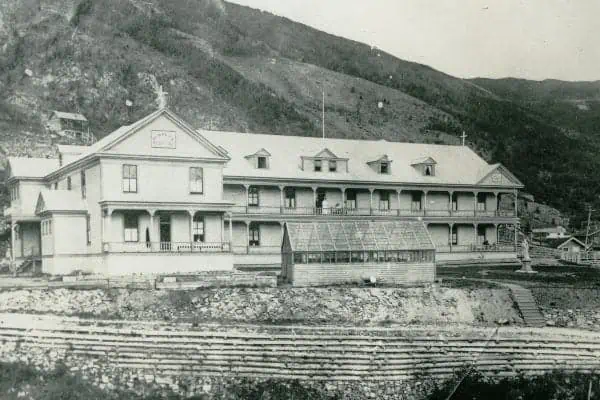In a previous edition of the KK, I commented on the amount of snow we received here this winter, how it narrowed and raised the street levels. This column is about the flip side of the equation, when the white stuff becomes wet stuff.
Except for Front Street, which is part of the Klondike Highway, Dawson’s streets are dirt. This is because we have to dig into them so often for sewer and water line repairs—not, as some people like to say, because we want to look historic.
When there is a lot more water than usual, that leaves us with lots of puddles. We always have some, but this year’s snow load is exceptional—and so is the result.
The March, April and May reports (dealing with February, March and April), from the Yukon’s hydrologist, show that the Dawson area received 168%, 463% and 260% more snow than is normal here for those months, according to records that begin in the 1980s.
That gave us 185%, 199% and 232% more snow water equivalent over the same three months.
Meltwater streams down from the hills, east of town, creating new temporary creeks, widening the existing ditches and leaving large puddles in its wake as it rushes along the residential streets of Eighth through Sixth avenues.
There’s less snow clearance on the upper avenues, so there’s a lot of water to make its way down to the more-level Fifth Avenue, where it sometimes makes a two-block lake, north and south, between Princess and King streets and west along Queen Street.
This can make getting to the Robert Service School (which looks great in its new Ted Harrison–inspired colours) an interesting journey, and it forced the two school buses, which load on Queen, to park elsewhere for a week.
Just down that block there were some other large pools on either side of Third Avenue, making it impossible to step off any of the boardwalks, at the four sides of its intersection with Queen, without getting soaked. One could admire the large reflections of the recently reopened Midnight Sun Hotel or the Yukon School of Visual Arts.
Most of the other intersections in a four-block radius shared that problem, which left both vehicles and pedestrians dodging large pools that might be hiding either major potholes or uncovered storm drains struggling to do their work.
Lanes between the streets were equally subject to massive pooling.
Dawson’s south end of town was once the channel of the Klondike River, and it is lower than the rest of town, so the block-long puddle that formed between Craig Street and the area where it rises to meet Front Street (which was the town’s original attempt at a dike) made a lot of sense geologically, though the city crew which kept trying to pump the water away told me they had not seen it be that persistent in other years.
Though the situation does make navigation, by wheel or by shank’s mare, a bit of a puzzle, you have to admit that it does make for some interesting pictures.







